Christmas Jumper Day: Who wins, retailers or charity?
- Published
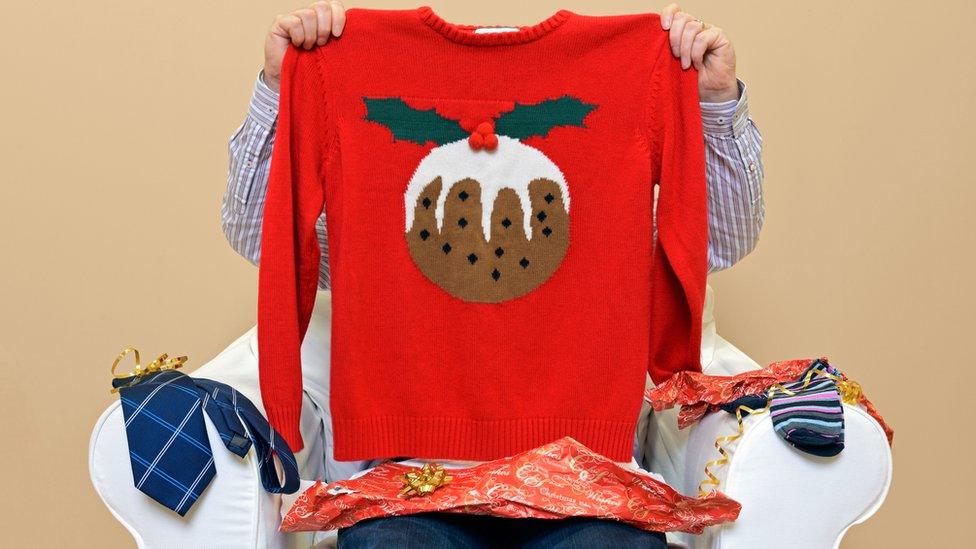
It is almost impossible to avoid Christmas jumpers during the festive season. From luxury cashmere knits, to sweatshirts with "Banta Claus" printed on them, there seems to be a jumper for all budgets and tastes.
But not everyone will be aware that festive knitwear now has its own slot in the Yuletide calendar - Christmas Jumper Day - which this year is on Friday 14 December.
It sees tens of thousands of schools and workplaces take part in the annual event, in which people wear a festive pullover to work, schools, or just to the pub.
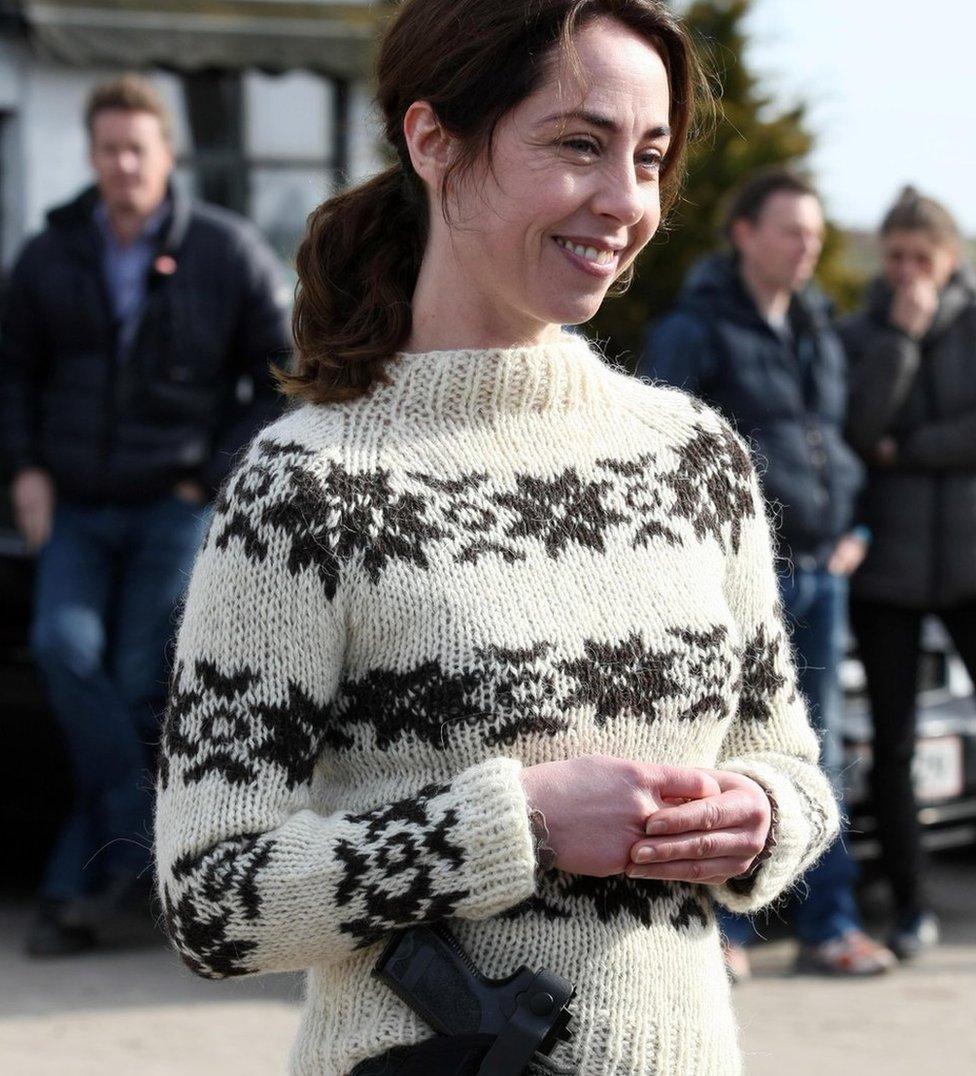
Actress Sofie Grabol as detective Sarah Lund in The Killing, who sported an array of knitwear
Now, woollies at Christmas are nothing new - remember Mark Darcy's reindeer jumper in 2001's Bridget Jones's Diary? - but they began to grow in popularity during the early 2010s.
Some say that was partly due to Danish drama The Killing, whose lead character wore Nordic-patterned jumpers.
Since then, it's become a big market in the UK, with shops selling them for anything between less than a tenner to more than £100.
Many people will be taking part in Christmas Jumper Day, external run by Save the Children, which urges participants to wear their "daftest woollies" and donate £2 each.
But with the cheapest shop-bought jumper costing at least five times that - who is the real winner, the retailers or the charity?
Charity
Save the Children says the "ongoing popularity of the humble festive sweater" is partly why their campaign has been so successful.

You can always customise a jumper you already own
Launched in 2012, the event has grown every year since, the charity says.
It said the annual event has raised £17m for children living in poverty in the UK and elsewhere in the world.
In 2017, more than five million people took part, including 13,000 schools and nurseries and 45,000 offices, the charity said.
Last year's event raised £4.4m and the charity is aiming to top that this year.
Save the Children says it often partners with retailers.
This year it has teamed up with fashion brand Selfish Mother and online giant Amazon - which is donating 20% of the net purchase price of Christmas jumpers sold - and stresses that shoppers do not necessarily need to buy a new jumper every year to take part.
"Everyone who signs up to take part receives a fundraising pack which includes fun, creative ideas to turn an ordinary sweater into a fabulously festive knit," the charity says.
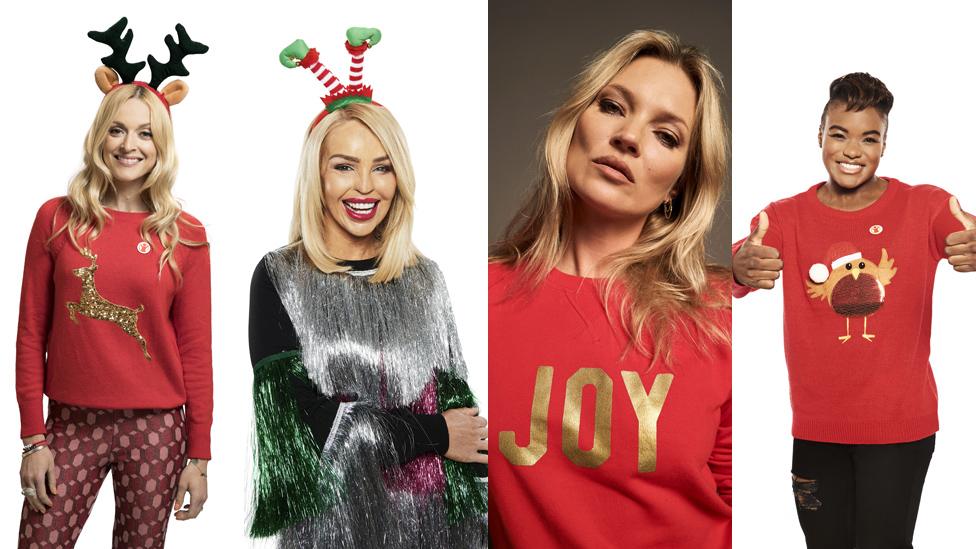
Radio presenter Fearne Cotton, model and campaigner Katie Piper, model Kate Moss and Olympic gold medal winning boxer Nicola Adams have all supported this year's campaign
The retailers
This year, the number of Christmas jumpers on shelves by 22 November was up 17% in family retailers compared with 2017, say analysts WGSN.
George at Asda - which retail analytics firm Edited reported was one of 2018's top stockists by the start of November - said it started selling festive jumpers about a decade ago when "a lot of people were making them themselves rather than buying them".
It has bought more than ever before this year.
The store will sell an estimated 300,000 men's and 350,000 women's Christmas jumpers. Although it did not disclose profits, its cheapest sweater for adults is priced at £10.

Novelty jumpers - like Colin Firth's in Bridget Jones's Diary - are still popular but trends are shifting to Fair Isle or Nordic styles which can be worn all winter, retail analysts say
Meanwhile, Matalan's chief operating officer Greg Pateras said the firm has seen sales rise by 15% year-on-year, suggesting they "remain a big shopping trend".
But it's not a completely positive picture for shops.
WGSN says many stores are increasingly finding themselves left with more stock than they can sell, partly as consumers prefer to "buy less but better".
"We can't deny the fact that customers are more conscious about consumerism, sustainability, overproduction etc, and items like novelty Christmas jumpers perhaps don't sit so well within this new sentiment," said Sara Gaspar, senior data analyst at WGSN.
And more than double the number of Christmas jumpers are being sold at a discounted price compared with last year, indicating profit margins will have suffered.
The issue of waste is on the mind of shopper Sarah Millard, 38, a company director from Sussex.
"I also think of an environmental perspective. These things are never going to be well-made, they are not going to be reused or recycled," she said.
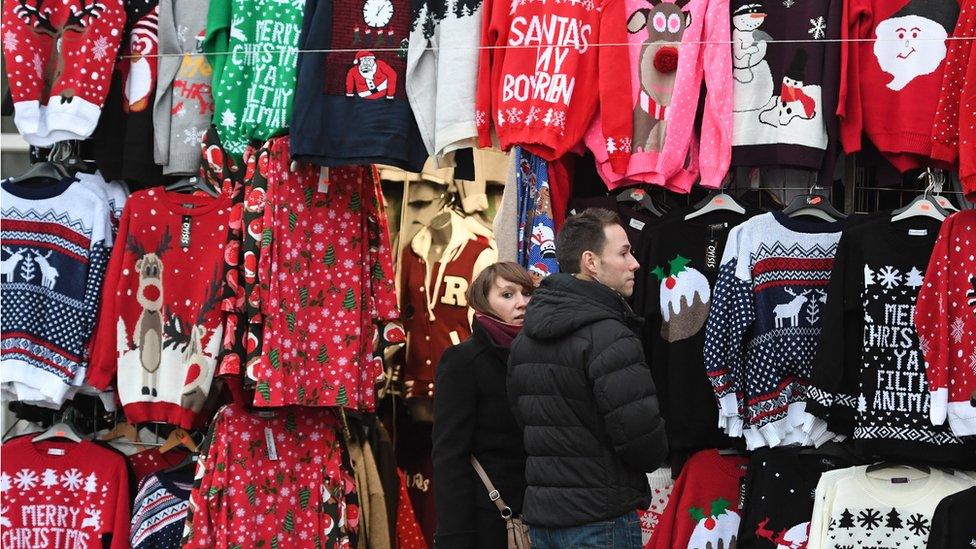
Sarah believes that festive jumpers - like the pressure to fork out on a costume at Halloween - seem to have become be a "bit of a money-making" venture.
"It's another thing we have to do towards the end of term," she said. "It is expensive for something you are going to wear only once, especially for children, as next year it wouldn't fit."
She adds: "You feel you should do it, you don't want your child to be the only one without a jumper."
The winner?
So who does win, the charity or the retailer?
It is a debate which has also been raised on internet forum Mumsnet, external, where a range of opinions were expressed.
"Charity days are fine, but £10-20 on tat that's not actually going to a charity is ridiculous," one person said.

Another mother asked:, external "Am I the only parent to think that this benefits shops far more than charities?"
While others were in full support. "I love Christmas jumpers and unashamedly wear them all year round," one person wrote.
Save the Children says while it encourages people to buy new jumpers from its retail partners it is not essential to purchase the latest Rudolph the Red-Nosed Reindeer sweatshirt in order to support Christmas Jumper Day.
And, while it isn't necessary to buy a new sweater every year, the charity believes the outlay is worthwhile.
Every jumper really can help save children's lives and ultimately help them thrive, it says.
- Published13 December 2017
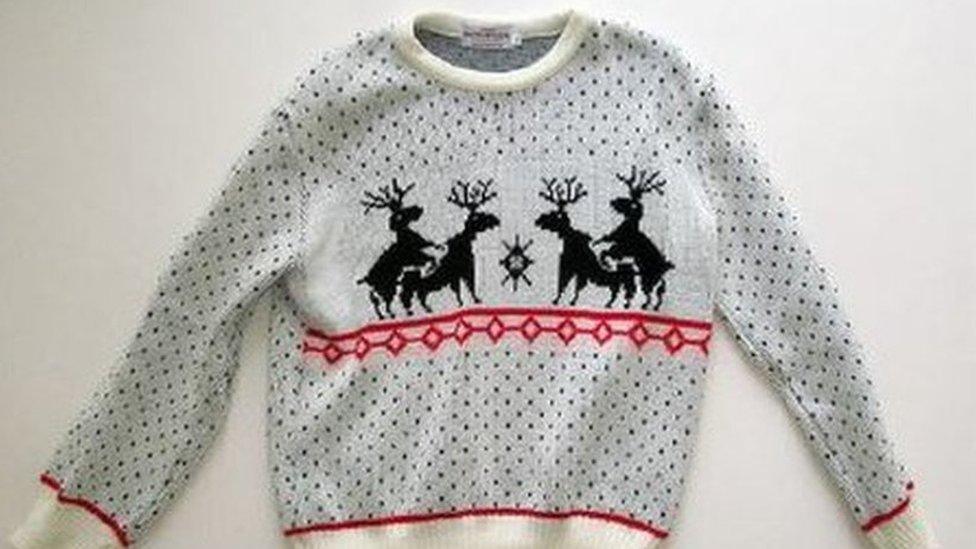
- Published15 December 2017